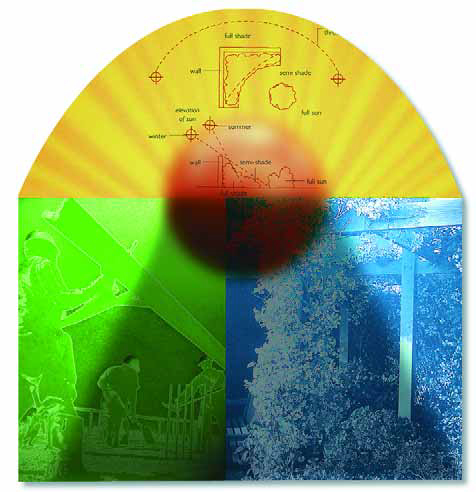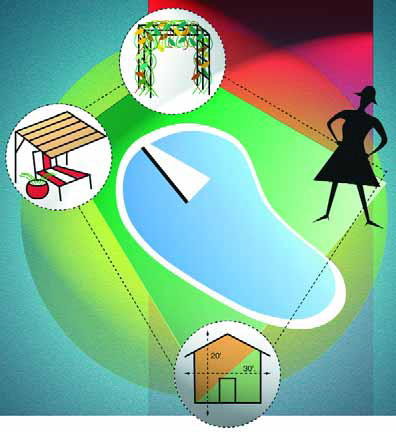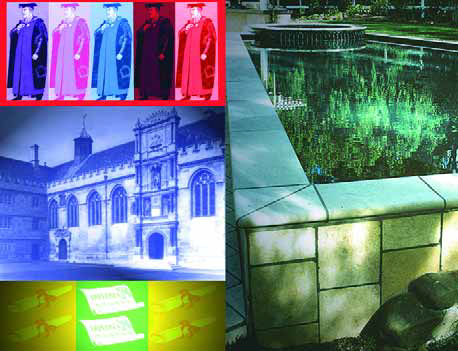column
I was deeply saddened when I learned that Jim McNicol passed away in April 2001. He had been struggling with respiratory disease and other ailments for many months - and suffering far more, I'm sure, than he would have ever let on to those around him. He was a disciplined and creative thinker, and with his passing the industry has lost one of its true innovators and most devoted, respected and admired teachers. For those of us who knew him, we have all lost a good friend. I knew Jim for more than 10 years, and he was among the first people we turned to when we were framing WaterShapes' content in its earliest stages. His column, "Things Electric," ran in the magazine's premiere issue in February 1999 and was
I truly enjoy including shade structures in my designs. Whether I'm working with an overhang, an arbor, a loggia, a pergola or some other structure (and, yes, they are all different), I see them as ways to create visual extensions of a house - and wonderful places to enjoy being next to the water. There is, of course, as much art and skill to designing and installing the right shade structure as there is to setting up all of the other features of a great backyard. Done well, a structure that projects out from a house will pull your eye from inside to outside while it provides relief from the sun. Similarly, freestanding shade structures
Summer is arriving, and those 90-degree-plus days are coming with it. Your clients are thrilled to have their watershapes to cool off in, but they can't spend all their time in the water! I've discussed shade structures and shade trees before, and it's an important feature to discuss with any clients whose yard you are designing. But there's more to shade than what you do overhead, and you need to discuss what you'll be planting in those shaded areas. There are two problems here. For the most part, people don't know what to plant in the shade - nor do they
I started my May 2001 column by expressing the belief that watershape designers should be paid for their designs in the same way interior designers and landscape designers are paid for theirs - and by indicating that lots of watershapers I've met are interested in knowing more about the mechanics of how this works. I put off addressing those issues last time because I saw a need to establish criteria for offering such services in the first place. In other words, there's much more to being a watershape designer than simply declaring yourself to be one, and I set up two dozen questions intended to clarify what I meant. Once you've answered those questions predominantly in the affirmative, once you've determined, through
Contrary to the impression that might be given by the headline, this isn't an article about building arbors that are safe. Rather, it's about how you can protect your clients and their guests from the sun by building beautiful structures in their yards. (Safety is part of the discussion, too, but not its focus.) I bring this up because many clients put piles of money into building spectacular pools but fail to give much thought to their surroundings. That's a shame, because those surroundings almost certainly will be seen much more than the pools will be used in the course of the average year. Several things need to be
It's great that more and more people in the watershaping business are interested in becoming custom designers. The way I see it, the future of the industry rests in the hands of those who strive for creativity and excellence in their work. Unfortunately, however, there are those out there who are brash enough to declare themselves "designers" without any sort of credentials to back up the claim - that is, without having done what it truly takes to
In October 1999, I wrote an Aqua Culture column titled "Value by Design" in which I explained my belief that watershape designers should be paid for their designs in the same way interior designers and landscape designers are paid for theirs. Since then, I've been contacted by lots of people who are interested in knowing more about how this works; I've also had the privilege of traveling throughout the United States and abroad to talk about watershape design and construction and have met hundreds of people with the same need for information. On the one hand, it's exciting to see the notion of a watershape-design specialty catching on: It isn't a foreign idea to people the way it used to be, and
In the past few issues of WaterShapes, I've used this column to share some very specific construction techniques with you - each one a special detail that I've used to add value and interest to my work. Before I did the first in the series, however, I probably should have laid down an important ground rule: Everything that you've seen in this column - and in the other articles and columns I've written and will write in the future - requires both constant and competent on-site supervision. It's a fact of life: The best design feature in the world isn't worth anything if it isn't executed properly. And no matter how good your in-house staff or subcontractors are, they need






















In Search of Community